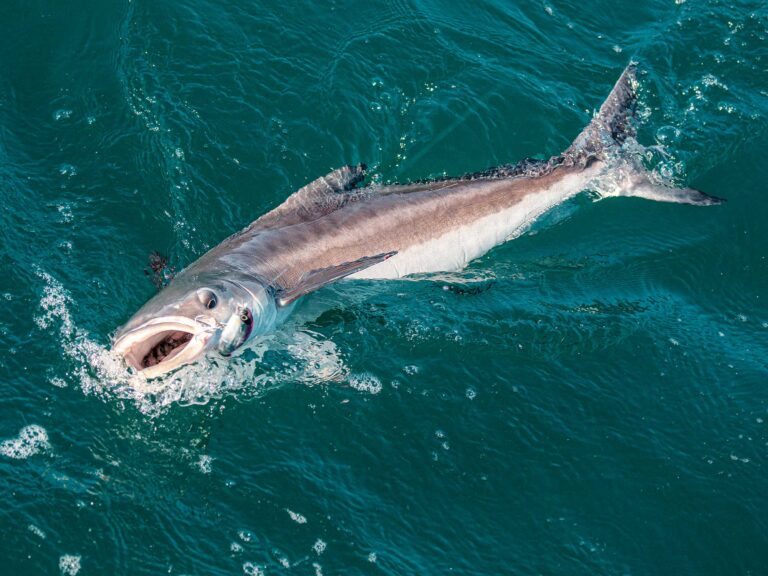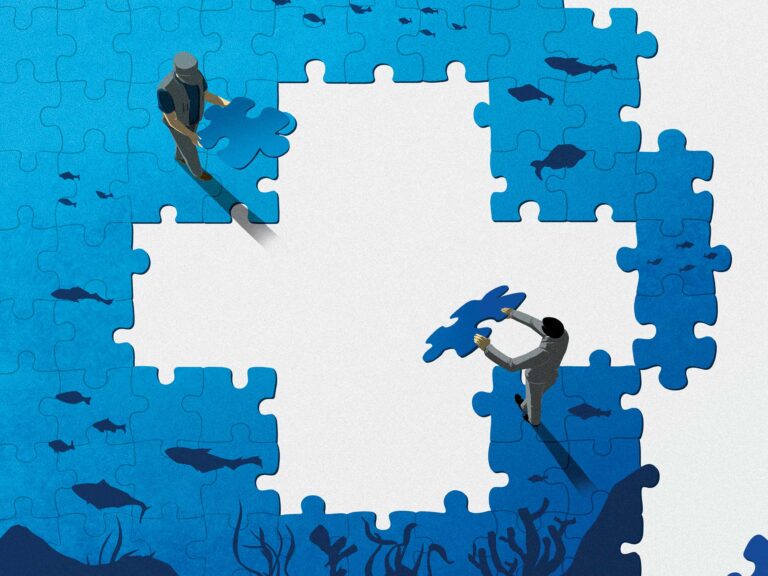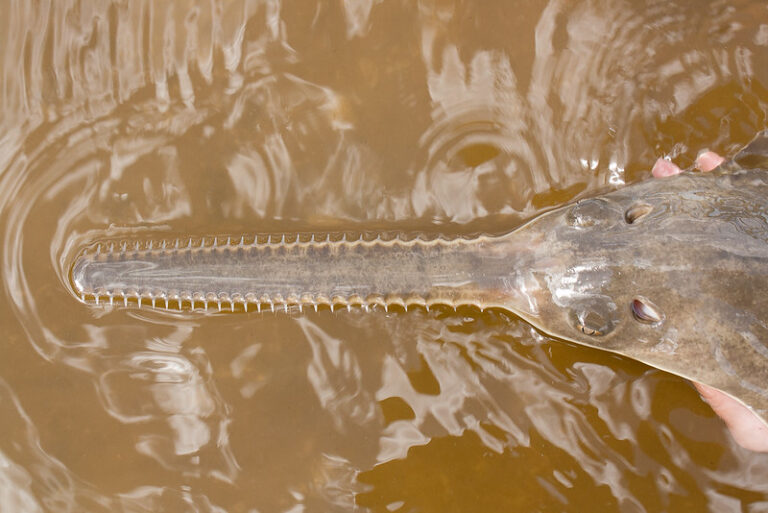
__
It’s the clamor of a way-too-early alarm. It’s the burning in your thighs from a daylong march crunching through shell and mud. It’s blazing the open bay at 50 knots in a $40,000 piece of fiberglass just to drop the anchor on a placid shoreline and leap over the gunwales and wade. It’s the beauty of black spots surrounded by a perfect lavender hue and the thump of your heart when you catch your first glimpse of the fish and realize it is too large to grab. This is the hunt for large speckled trout, and it’s why we Texans are considered fanatics. Here are five proven Lone Star lunker-trout locales.
__
1. Stewts Island – Sabine Lake: I may never have another episode like on one June morning a decade ago. Guide Chuck Uzzle and I slid into the water just after sunrise and began throwing black Top Dogs. You have a feeling it is going to be a good day when you take two steps from the boat, make a cast and are greeted by a 24-inch trout.
That first fish was the smallest of the morning. For the next three hours we caught and released nine trout over 28 inches, but the one that got away still haunts me. I lost a fish I estimated at 33 inches – it was too big to grasp! Mind you, I had already fooled a half-dozen specks busting 8 pounds before that blow, and this magnificent specimen dwarfed them all. I estimated it at 12 pounds.
The conditions that made the dawn so magical were the presence of mullet and an incoming tide. The tide had ushered rafts of hand-size mullet to the sand flat from the nearby Sabine River, and a harem of large trout had followed. It was easy pickings for the trout shadowing the school of bait, making it even easier to fool the beasts with dog-walking plugs.
The same tactics and conditions apply today. Black Top Dogs still work, but bone Super Spooks, chrome MirrOlure She Dogs and pearl Corky Fat Boys have also become popular.
**_

_**
__
Pro’s Choice: To match the mullet coming in from the Sabine River, artificials such as MirrOlures and Top Dogs are a good choice.
**

- Rocky Slough – Baffin Bay:** The mystique of Baffin stretches across the country. In my estimation, it is one of a trio of premier trophy trout estuaries in America (Calcasieu Lake, in southwest Louisiana, and the Indian River, on the east coast of Florida, are the others). It is difficult to pick one locale as “the” big trout spot; nevertheless, if I had to choose just one place to fish in Baffin, I would choose Rocky Slough sight unseen.
Drifting or wading gets it done here, though you had better be nimble to negotiate around the prehistoric rock formations. Trout use the rocks to ambush baitfish, and there is no better thrill than watching a silver streak dash from a rock and crush a topwater.
The Laguna Madre averages three feet deep, but the nearby Intracoastal Waterway, only a few hundred yards away, provides deepwater access. Flipping mullet point you in the right direction, and birds picking on tiny shrimp and glass minnows are also potent indicators. South winds push bait against the shoreline when tides are high. Below-normal tides hide fish in three to four feet of water.
Some toss plum soft plastics or D.O.A. Shrimp under rattling corks, while others choose jigs and weedless spoons wedged between rocks. I stick with a Super Spook, She Pup or Skitter Walk and wait for the big blow.
**_

_**
__
Pro’s Choice: Work this area slowly with D.O.A. Shrimp and soft plastics. If you decide to drift, make sure you bring along a drift bag in case the current is moving you too fast.
**

- Kenedy Shoreline -** Port Mansfield: Though this particular shoreline is considered part of Port Mansfield, it also carries the Lower Laguna Madre moniker. Recent declines in populations prompted Texas Parks and Wildlife to reduce the daily bag for speckled trout from 10 to five. Since conservative measures were adopted nearly three years ago, anglers have already experienced a difference. During the spring and winter of 2009, impressive numbers of trophy trout were caught, photographed and released. As a bonus, don’t be surprised if you catch a glimpse of a south-Texas Boone and Crockett whitetail at the water’s edge.
A decade ago, exactly a week later than the previously mentioned diatribe on Sabine Lake, retired guide Melvin Talasek and I caught three trout over 30 inches in a three-day period around the full moon. The undulating mud and grass bottom encouraged minnows and mullet to trickle to the shallows, where hordes of heavy trout were waiting to gobble them up, not to mention our chartreuse and redheaded Top Dog Jr. lures.
**_

_**
__
Pro’s Choice: Thanks to recent conservation efforts, this area has really been thriving. Big trout here seem to love Badonk-A-Donks.
**

- Frozen Point – East Galveston Bay:** Named for the great freeze of 1900, when cattle literally froze in their tracks along the bay’s edge, this terrain of shell and mud on the banks of the Anahuac National Wildlife Refuge has long been a big trout magnet. Its proximity to Rollover Pass allows for constant flushing of tides and bait, and the mud bottom acts as an insulator during the winter, holding warmer water temperatures despite frigid surface readings.
Incoming tides escort mullet from the Gulf of Mexico, and the outgoing current drains the nearby marsh of shad and shrimp. In the fall, diving gulls point the way to fish. I know, school trout normally hang under birds, but don’t be surprised to catch a gator trout under birds along this shore.
Topwaters rule during the fall and summer, but Corkies, Catch 5s and Catch 2000s are good choices in the winter. Plum, glow or electric chicken Bass Assassins, Norton Bull Minnows or Texas Trout Killers rigged on light jig heads are solid offerings as well.
**_

Pros’ Choice:_** There are a lot of different go- to artificials for this location, but it really depends on the season. A rule of thumb is to fish subsurface in the summer and on the surface in the winter.
**
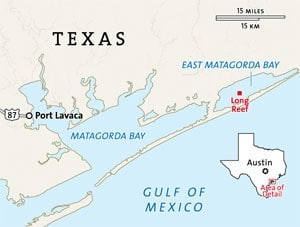
- Long Reef – East Matagorda Bay:** There are several wadeable reefs in the bay, all holding large trout at certain times of the year; however, Long Reef is the largest of them, running east and west smack-dab in the middle of the bay. It is surrounded by six feet of water, allowing trout easy access to deeper water when tides or temperatures recede.
The reef shines when mullet are stacked thick on the surface or when the white shrimp of autumn burrow in the mud to evade predators. Depending on the direction of the wind, I park my boat on the east or west tip. It takes about three hours to methodically fish the reef, working the south side first and then plugging the north side on my return to the boat.
Pluggers and jiggers both score here. I choose to wade parallel to the drop-off and work Super Spook Jr. lures and She Pups, tossing every other cast to five feet of water and fish staging in deeper water. However, when my wife wades by my side, I put her on a Chicken on a Chain or Morning Glory Bass Assassin and allow her to dance the plastic over every piece of shell. By giving both presentations, we decipher what mood the trout are in that day and make adjustments.
__
**_
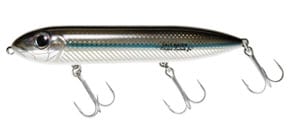
Pro’s Choice:_** This area is heavily occupied with both mullet and shrimp, but Super Spook Jr. lures work very well here.





